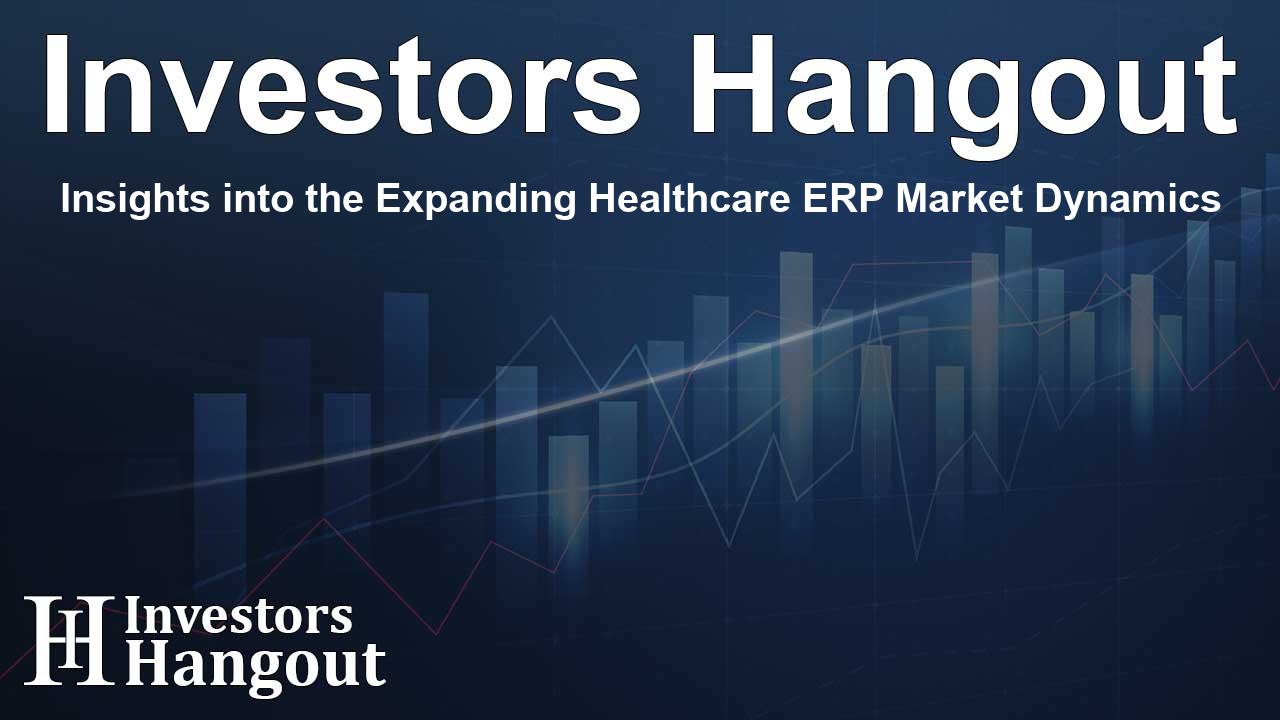Insights into the Expanding Healthcare ERP Market Dynamics

Understanding the Healthcare ERP Market Growth
The global healthcare ERP market, valued at USD 7.99 billion, is set for exponential growth, potentially reaching USD 16.06 billion in the coming years. This transformation underscores the escalating demand for efficient data analysis and patient record management. As organizations strive for more streamlined operations, the need for automated solutions grows, propelling market advancements.
Dominant Regions and Their Impact
In 2024, North America secured a leading position in the healthcare ERP market, accounting for a remarkable 37% market share. This dominance can be attributed to the swift digitalization across various sectors, which enhances operational efficiency and data accessibility. The region's substantial healthcare spending and a high concentration of healthcare providers further bolster its market leadership.
Exploring Asia Pacific's Rapid Expansion
The Asia Pacific region is poised for the fastest growth in the healthcare ERP market over the next few years. Significant government initiatives promoting digital transformation and healthcare infrastructure development are pivotal in this acceleration. The burgeoning cloud adoption in the region simplifies access and reduces operational costs, making it a hotspot for healthcare innovation.
Key Segments Driving the Healthcare ERP Market
Healthcare ERP systems are multifaceted, integrating various operational aspects including finance, patient management, inventory, and human resource management. In 2024, the finance and billing segment was the most dominant, reflecting the priority given to financial oversight and billing transparency in healthcare organizations. The inventory and materials management segment is projected to witness the most rapid growth, emphasizing the importance of effective resource allocation in healthcare.
Challenges Inherent to ERP Adoption
While numerous opportunities exist, the healthcare ERP market faces substantial challenges. High installation costs, integration complexities with legacy systems, and user resistance can impede adoption, particularly for smaller institutions with constrained budgets. To navigate these hurdles, comprehensive change management strategies and meticulous planning are vital, enabling healthcare organizations to successfully implement ERP systems.
Future Trends Shaping the Industry
As the healthcare ERP landscape continues to evolve, several trends are becoming increasingly prominent. The integration of artificial intelligence stands out, enhancing data processing and decision-making capabilities through advanced analytics. Additionally, a significant rise in cloud-based ERP solutions is noted, driven by their cost-effectiveness and scalability, allowing for more flexible healthcare operations.
The Rise of Interoperability in Systems
Healthcare providers increasingly prioritize the integration of ERP systems with electronic health records (EHRs) to promote seamless data flow and improve patient care models. This trend aims to reduce administrative burdens and foster a more coordinated approach to healthcare delivery, ultimately translating into better outcomes for patients.
Noteworthy Collaborations and Innovation in the Sector
Leading companies like Oracle and Microsoft are making substantial contributions through innovative solutions that enhance operational efficiencies. Oracle Health's partnership with the Cleveland Clinic illustrates the active collaboration happening in the sector, focusing on AI-driven healthcare solutions to improve patient management and public health initiatives.
Continued Growth and Prospectus
Projected trends indicate that the healthcare ERP market will not only expand in size but will also evolve in functionality. As healthcare providers increasingly demand systems that can support complex operational needs while ensuring compliance with regulatory standards, the opportunities for growth remain robust. Continuous enhancements in technology promise a more integrated and efficient healthcare environment.
Frequently Asked Questions
What is the projected growth of the healthcare ERP market?
The market is expected to grow from USD 7.99 billion in 2024 to around USD 16.06 billion by 2034.
Which region leads in healthcare ERP market share?
North America leads with a 37% share of the healthcare ERP market in 2024.
What are the key segments driving this market?
Finance and billing, as well as inventory and material management, are key segments driving market growth.
What challenges does the healthcare ERP market face?
Major challenges include high integration costs, resistance to change, and complexities with older systems.
How is AI influencing the healthcare ERP landscape?
AI is enhancing data processing and decision-making capabilities, thereby improving operational efficiencies.
About The Author
Contact Evelyn Baker privately here. Or send an email with ATTN: Evelyn Baker as the subject to contact@investorshangout.com.
About Investors Hangout
Investors Hangout is a leading online stock forum for financial discussion and learning, offering a wide range of free tools and resources. It draws in traders of all levels, who exchange market knowledge, investigate trading tactics, and keep an eye on industry developments in real time. Featuring financial articles, stock message boards, quotes, charts, company profiles, and live news updates. Through cooperative learning and a wealth of informational resources, it helps users from novices creating their first portfolios to experts honing their techniques. Join Investors Hangout today: https://investorshangout.com/
The content of this article is based on factual, publicly available information and does not represent legal, financial, or investment advice. Investors Hangout does not offer financial advice, and the author is not a licensed financial advisor. Consult a qualified advisor before making any financial or investment decisions based on this article. This article should not be considered advice to purchase, sell, or hold any securities or other investments. If any of the material provided here is inaccurate, please contact us for corrections.
